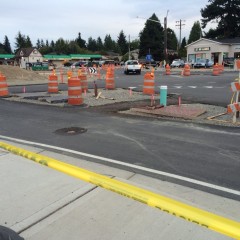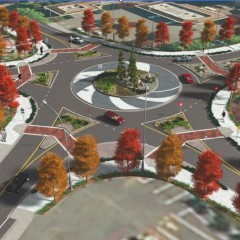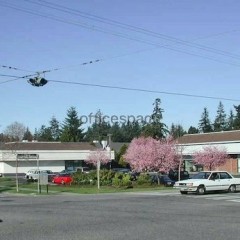I live near a five corner intersection, and for as long as I can remember, it’s been equipped with five stop signs. I wouldn’t call it dangerous, but it’s never been very efficient, mostly because of the ambiguity. Turn signals are well-suited for four-way stops; you turn them on when you want to turn and you leave them off when you don’t. Everyone usually knows where everyone else is going. Turn signals are far less effective at a five-way intersection; you’re never really going straight so you never leave your signals off, but when you do signal, no one knows exactly which right or left turn you’re proposing. Thus the ambiguity.
Consequently, traffic through this intersection has always been messy and slow. Although I’ve never seen any serious accidents, there’s always a lot of halting and stalling; with everyone waiting for everyone else to commit to a turn. During rush hour, the traffic can back up for several blocks. It’s by no means a disastrous situation; it’s more like something that could obviously be better.
So along came a guy with a vision and a degree in civil engineering. “What if we constructed a roundabout?” he thought, and eventually the city council decided to fund the project. Most of the local people were mildly opposed to the change. Roundabouts are still somewhat exotic in this area and they came along well after most of us learned to drive. Besides, like I said, no one was all that concerned with the current situation at Five Corners.
And then came June, when the project started. The intersection became a complicated mess of torn-up asphalt, orange cones and large, yellow vehicles. Flaggers brought traffic to a complete stop, causing most of us to look for alternate routes through formerly quiet neighborhoods. If the situation was bad before construction, it was horrible during the summer.
And now it’s late September. The worst is over. Traffic has started to travel counter-clockwise around the large circle in the middle. The landscaping has started to materialize. People are beginning to realize that a roundabout is far safer and far more efficient t han a confusing five-way stop. Everyone yields and everyone turns right. It’s consistent and predictable.
han a confusing five-way stop. Everyone yields and everyone turns right. It’s consistent and predictable.
Long story short: we had a system that seemed good enough, although it really wasn’t. We went through a tough period of change in which everyone was miserable. Now we’re beginning to realize that it was well worth it, because the system that’s emerging is much better than what we had before.

Pingback: Washington State Democrats Oppose the Common Core | Stories From School
All we can do is continue to focus on student learning. We need to simply and persistently insist that the Common Core will help us better teach our students.
All we can do is continue to focus on student learning. We need to simply and persistnetly insist that the Common Core will help us better teach our students.
I think part of the reason the roundabout worked is because there was evidence that roundabouts had worked elsewhere in the country or out of the county. Is there a way that, without a total turn to propaganda, that we as educators can provide a response to those who are so anti-roundabout or can work together to create a community of support?
I’m also very concerned about political charlatans who’ll harness the anti-roundabout fervor and ride it to “victory” with absolutely no plan for effectively redesigning the intersection.
Many parallels here. What I worry about (in our side of the metaphor) is that people who cannot conceive of what the final roundabout will look like might halt construction and change the plans to something else simply because of the inconveniences and challenges inherent in being “under construction.” Suddenly, the plan is set back a few years, and work toward the roundabout (a startlingly simple and efficient solution, really) must be undone and replaced with the newest and best five-way-stoplight system (it has wi-fi sensors!) that some investor in Pennsylvania who has never seen your intersection thinks will work for your community. Construction begins again (or continues, really) and we remain in a constant state of torn up sidewalks and job security for the contractors, flaggers, and construction workers…but nobody gets anywhere because we don’t let anything actually get finished.